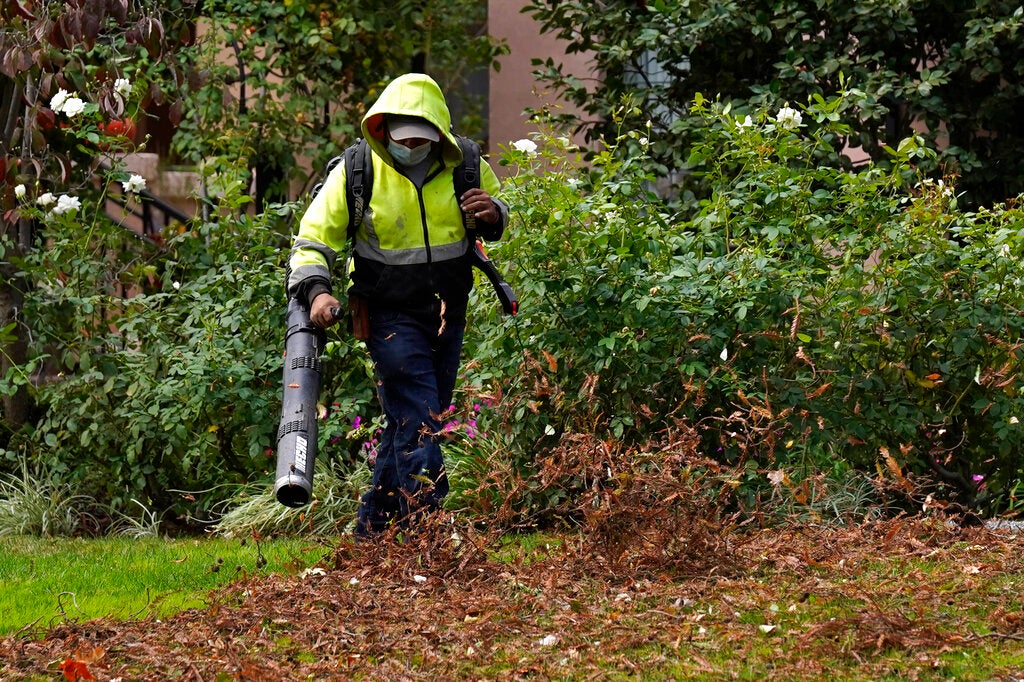Ill-conceived ‘waters of the U.S.’ rule faces regulatory rollback

Wetlands border an Eastwick neighborhood in Philadelphia near the John Heinz Wildlife Refuge. (Emma Lee/for NewsWorks)
President Trump is committed to eliminating the Waters of the U.S. Rule, which outlines federally protected waterways. Critics of the rule say it hampers development and hurts farmers. Environmentalists say the rule is necessary to protect ecosystems and drinking water. How can the Trump Administration change water rules already in place, and what will happen to Obama Administration proposals? WHYY is hosting a public discussion, “Trump and Our Water Systems: A StateImpact Discussion,” on March 6, about these and other questions.
—
Roughly 25 percent of the cost of a typical new single-family home is the result of government regulation. The Clean Water Act — specifically its definition of “waters of the U.S.” — offers a prime example of how government regulation can drive up the cost of housing for hard-working Americans.
Signed into law in 1972 by President Richard Nixon, the CWA gives the federal government authority to regulate “navigable waters,” which Congress defined as “waters of the United States,” also referred to as WOTUS.
Unfortunately, determining what a WOTUS is has never been easy. A vague, three-decades-old regulatory definition of WOTUS has generated jurisdictional confusion. This has left home builders and countless other stakeholders in the dark, not knowing if their properties contain federally protected areas subject to CWA regulations and permit requirements.
In April 2014, attempting to clarify the matter, the U.S. Environmental Protection Agency and the U.S. Army Corps of Engineers — the agencies that jointly administer the CWA — proposed a rule to redefine WOTUS. The proposal received over one million comments, and the agencies finalized the rule in June 2015.
The agencies claim the rule provides clarity. But in truth, it further muddies the waters with new terms and definitions that unlawfully expand CWA jurisdiction beyond congressional intent and Supreme Court precedent.
For instance, the rule’s expansive “tributary” and “adjacent waters” provisions, coupled with its limited exemptions, have swept countless man-made ditches, isolated ponds, and dry channels that flow only after it rains into the federal regulatory net.
The rule amounts to a federal land grab and raises serious concerns among many stakeholders, including farmers, state and local governments, manufacturers, and home builders.
By their very nature, land development and home-building involve substantial earth-moving. Builders and developers often must obtain permits under the CWA to complete their projects. As the definition of WOTUS expands under the rule, more activities will trigger CWA permits. Simply put: More WOTUS means more permits.
Obtaining these permits is difficult and can generate significant project delays and costs. A 2002 study found that it takes an average of 788 days and $271,596 to obtain an individual CWA permit and 313 days and $28,915 for a “streamlined” nationwide permit. And these figures don’t even consider mitigation costs, which can add up quickly.
Ultimately, these regulatory costs are passed on to the home buyer, and housing becomes more expensive for everyone.
The compounding of myriad local, state, and federal requirements has a profound impact on housing affordability and homeownership. The average cost of a new home is $348,900, and approximately $84,671 of that can be attributed to regulations. These costs only exacerbate the nation’s housing affordability problem.
The added costs of the expansive WOTUS rule bring little to no benefit to the environment. Many of the features the rule places under federal control are already regulated at the state or local level. The EPA and the Corps have disregarded this regulatory overlap, as well as the intent of Congress and the opinion of the Supreme Court.
Members of Congress have spoken out against the rule and introduced bills calling for its withdrawal.
Meanwhile, the rule faces countless legal challenges, including lawsuits brought against it by 31 of 50 states. As the legal battle marches toward the Supreme Court, the rule remains under a nationwide stay imposed by the 6th Circuit Court of Appeals less than two months after it took effect — a testament to its serious flaws.
Under the new administration, the rule is likely to face regulatory rollback. President Trump has vowed to modify the WOTUS rule among other regulations. And Oklahoma Attorney General Scott Pruitt, the new head of the EPA, has also been a vocal opponent. As Oklahoma’s Attorney General, he filed a lawsuit against the rule in federal court. As the new administration takes shape and the litigation unfolds, the nation’s home builders hope their WOTUS woes will soon be behind them.
—
Owen McDonough, Ph.D., is the environmental policy program manager for the National Association of Home Builders.
WHYY is your source for fact-based, in-depth journalism and information. As a nonprofit organization, we rely on financial support from readers like you. Please give today.




